Introduction:
Formwork is a term that refers to temporary or permanent moulds that are used to pour concrete or other comparable materials. The shuttering moulds are supported by the falsework in concrete construction. For all types of construction projects, plastic shuttering is the most often utilised shuttering. Both large and small projects require concrete shuttering. It is suitable for a wide range of construction projects. When concrete is poured into moulds known as formworks, it retains its position. When the moulds are removed, a solid structure will be visible. Shuttering or formwork is the term for the complete process.
Both temporary and permanent moulds can be made with formwork. The concrete is kept in shape thanks to these moulds. The mould is removed once the required strength has been achieved. This mould can also be used again in the future.
Requirements of Formwork in construction:
1) Concrete structures can be built rapidly and at a low cost by employing formwork.
2) Its fundamental benefit is that it cannot be substituted by any other technology.
3) A formwork provides suitable access and working platforms throughout the construction process, significantly improving scaffold safety for workers.
4) By reducing the floor-to-floor building cycle time, formwork assists in reducing the project’s timeframe and expenditures.
5) Formwork enables construction managers to provide precise on–time shuttering and de–shuttering of formwork resources, resulting in increased project efficiency and resource utilisation.
6) It ensures structural safety by providing solutions for all types of overlay loads, resulting in constructions that are both safe and practical.
Types of various Formworks:
Different types of formworks are as follows:
1. Timber Formwork:
Among all types of formwork, timber formwork is the most common. From the beginning of time, timber shapes have been widely employed in construction. The oldest type of formwork used in construction is timber formwork. It is the most flexible variety and is assembled on-site, providing the following benefits:
- Produced and discarded with ease
- When compared to metal formwork, it is quite light.
- Workable, with no restrictions on shape, size, or height.
- Small initiatives are cost-effective.
- Allows local wood to be used.
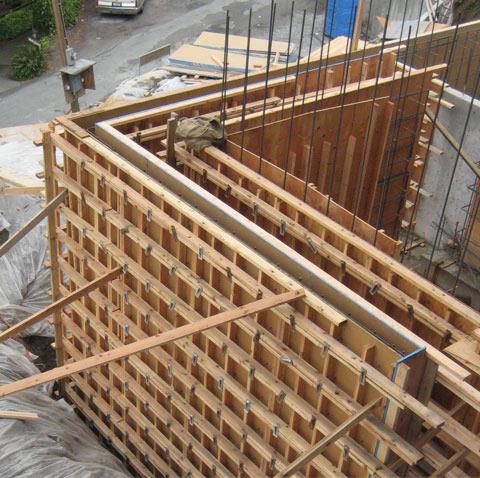
Fig 1: Timber Formwork
Source: Designing Buildings Wiki
Timber formwork can fabricate the appropriate form and size on-site. It is simple to utilise in any building, but it may take a long time to complete major projects. The longevity of plywood formwork is limited. Timber shuttering is a low-cost, easy-to-operate shuttering option. It can be cut into any shape or size and connected together.
2. Steel Formwork:
Steel formwork is becoming more popular as a result of its strength, durability, and ability to be reused repeatedly throughout time. Steel formwork is expensive for little jobs, but it may be utilised for a variety of jobs. When compared to timber formwork, steel shuttering provides a clean surface finish to concrete. Tanks, columns, chimneys, sewers, tunnels, and retaining walls are all examples of round or curved constructions. The advantages of steel formwork are:
- Steel is strong, long-lasting, and sturdy.
- It provides a smooth finish to the member surface.
- It is totally waterproof or moisture–proof, and the honeycombing effect is minimised.
- It can be used over a hundred times.
- Steel formwork is more easily installed and removed.
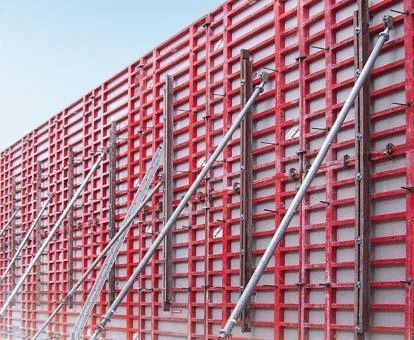
Fig 2: Steel Formwork
Source: IndiaMART
3. Aluminium Formwork:
Aluminium has a lower density than steel, making it lighter. In comparison to steel, this is the main advantage. The formwork made of aluminium is nearly identical to the formwork made of steel. When a significant number of repetitive uses are produced in construction, shuttering down with aluminium form has proven to be cost-effective. The main disadvantage is that once the formwork is built, no changes can be made.
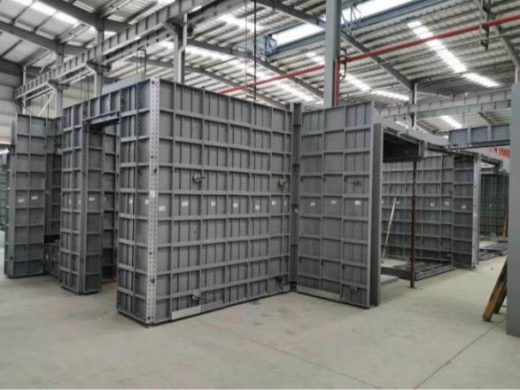
Fig 3: Aluminium Formwork
Source: Sinogar Aluminium Co. Ltd
4. Plywood Formwork:
Plywood formwork is a sort of re-moulded timber formwork in which resin-bonded plywood sheets are attached to timber frames to form panels of the desired dimensions.
It’s tough, adaptable, and simple to work with. When compared to other materials, its lifespan is far too short. Plywood is becoming more common in formwork because it has a smooth surface that requires no further finishing and can be re-used 20 to 25 times.
Plywood can be utilised to cover a broad area, lowering the labour cost of installing and dismantling formwork.
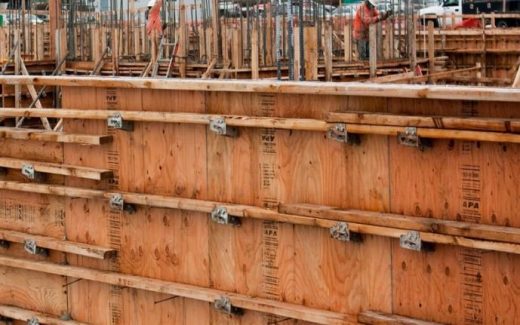
Fig 4: Plywood Formwork
5. Plastic Formwork:
Plastic formworks are interlocking, light-weighted devices that can be reused over 100 times. It’s suitable for standard concrete construction. For similar shapes and major housing plans, this sort of formwork is becoming increasingly popular. Some advantages of plastic formwork are:
- Because of lightweight, plastic formworks require less handling.
- It is suitable for use in the huge concrete section.
- Multiple reuses are possible with proper installation and use, making it very cost effective.
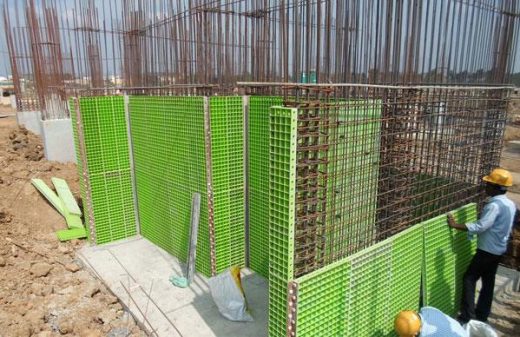
Fig 5: Plastic Formwork
Source: CforCivil
6. Fabric Formwork:
Fabric formwork is also known as flexible formwork. This technique employs lightweight, high-strength fabric sheets that are designed to adapt to the fluidity of concrete and produce unique architectural forms.

Fig 6: Fabric Formwork
This type of formwork uses less concrete than rigid systems, which saves money. It is a new technology in the shuttering business that is particularly well adapted to irregular and complex-shaped structures.
7. Stay-in-Place Formwork:
This type of formwork is commonly fashioned in hollow tubes and used to construct columns and piers. It is typically erected on-site and made from prefabricated fibre-reinforced plastic forms. As the name implies, this formwork remains in place after the concrete has set, acting as axial and shear reinforcement to avoid corrosion and freeze-thaw cycles.
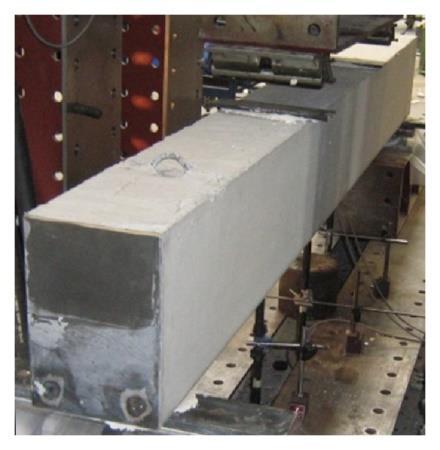
Fig 7: Stay-in-place Formwork
Source: Hindawi
8. Permanent Insulated Formwork:
Formwork that is permanently insulated provides extra thermal, acoustic, fire-resistant, and rodent-resistant features, and is one of the most advanced formwork systems available. Insulating concrete forms (ICF) are one of the most frequent varieties, in which concrete structures are insulated with polystyrene foam that remains in place until the concrete has hardened. This sort of formwork is low-energy, long-lasting, and eco-friendly.
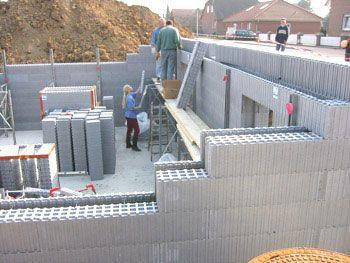
Fig 8: Permanent Insulated Formwork
Source: Pinterest
9. Flexible Formwork:
This technology combines lightweight, high-strength fabric sheets to create highly optimised, artistically intriguing building forms that match the fluidity of concrete. This flexible formwork utilises significantly less concrete than the rigid formwork mentioned above, allowing for significant energy savings.
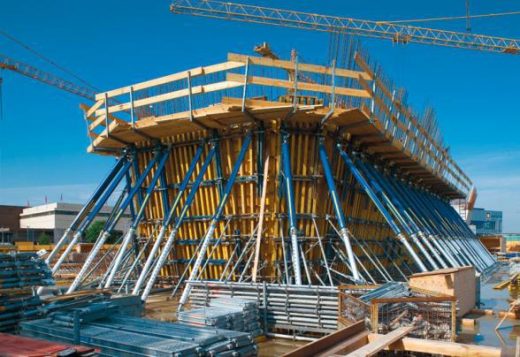
Fig 9: Flexible Formwork
Source: Construction Week Online
10. Engineered Formwork System:
This type of formwork is made up of prefabricated modules that are held together by a steel or aluminium frame. The Engineered Formwork System can be built significantly faster (with pins and clips) and at a cheaper cost than traditional timber formwork since it can be reused thousands of times.
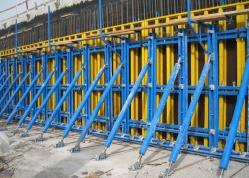
Fig 10: Engineered Formwork System
If you have a query, you can ask a question here.



Mivan construction technology is gaining popularity due to its speed, efficiency, and cost-effectiveness. This article explains the process of Mivan construction and its advantages over traditional methods.
Mivan construction technology is gaining popularity due to its speed, efficiency, and cost-effectiveness. This article explains the process of Mivan construction and its advantages over traditional methods.
Regards
This type of formwork is made up of prefabricated modules that are held together by a steel or aluminium frame. The Engineered Formwork System can be built significantly faster (with pins and clips) and at a cheaper cost than traditional timber formwork since it can be reused thousands of times.
Regards
krishna tiwari